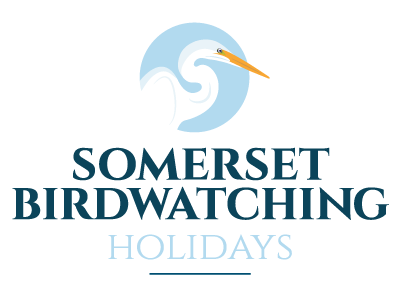Autumn newsletter
SOMERSET BIRDWATCHING HOLIDAYS: Newsletter 1 – Autumn 2018
Purple Heron, one of the year’s highlights
It’s hard to recall, after that splendid summer, just how cold and late Spring 2018 actually was. Yet despite the chilly weather, our March and April tours produced a great range of birds and avian experiences.
The good news about the cold spring was that many wintering species lingered on until late March, so at Cheddar Reservoir we enjoyed spectacular courtship displays from Goosander, Goldeneye and Great Crested Grebe. Also, in the nearby woods on the Mendips, the lack of leaves on the trees allowed great views of Nuthatch, Goldcrest and two singing Marsh Tits. On our coastal patch, we came across two classic migrants: a splendid male Wheatear and a real treat, a breeding plumage Water Pipit – a new bird for the patch.
In April, we caught up with more migrants: eight species of warblers, half a dozen Wheatears, and three Whimbrels en route to their breeding grounds in Scandinavia; while at a nearby heron colony we enjoyed views of one of our rarest breeding birds, a Cattle Egret, showing off its orange plumes.
Late April and May is perhaps the peak time for birding here in Somerset; though of course autumn and winter produce wonderful spectacles, and larger numbers of birds such as waders, wildfowl and the famous Starlings.
Mealy Redpoll
This spring our tours certainly delivered: songbirds were everywhere, and we also had great views of a calling Cuckoo, perched on top of a tree at the RSPB Ham Wall reserve; several drake Garganey – surely our most beautiful duck; and a real rarity, a Mealy Redpoll, showing off the bright red head that gives this bird its name.
This – only about the tenth record for Somerset, was found by local birder Julian Thomas at Ham Wall, and obligingly posed for us next to its cousin the Lesser Redpoll, just a few metres away. Even better was a brief sighting of a pair of Great Crested Grebes doing the famous ‘Penguin Dance’, in which they pick up water weed in their bills, then rise up in the water on frantically paddling legs to pose in a mirror image of one another! For both Graeme and me, this was a lifetime first, showing that even common and familiar birds can deliver amazing experiences.
Other memorable sightings on our spring tours included several obliging Bitterns, either posing by the reeds or flying overhead, and one of our most attractive waders, Black-tailed Godwit, flocks of which stop off here to feed on their way north to breed in Iceland, showing off their splendid brick-red breeding plumage.
Midsummer is not usually considered the ideal time to see birds in Somerset – or so we thought! But two groups of clients could only visit at this time of year, so we decided to give it a go. True, the smaller birds had stopped singing, but the waterbirds were very obliging, as they flew back and forth to get food for their young.
On two back-to-back tours, at the end of July and beginning of August, we saw more Great White Egrets than we could count, along with lots of Little Egrets, several Bitterns and a real rarity: a splendid adult Purple Heron, which perched obligingly at the top of a tree outside Noah’s Hide.
Other notable sightings included a Green Sandpiper, one of the earliest autumn migrants, on its way south from the forests of Scandinavia to sub-Saharan Africa; several Hobbies, hawking acrobatically for dragonflies; and – on a visit to the new Steart Marshes WWT reserve on the other side of the River Parrett – Yellow Wagtails, a young Whinchat and several pairs of Avocets, with their comical-looking chicks.
But the highlight of this trip was another Somerset speciality: a flock of a dozen or so Cranes feeding in fields on the southern half of the levels. They may be Europe’s tallest bird, but in this huge area they can still be very hard to find!
During the last six months or so we’ve explored some places that are very familiar, and discovered new and unfamiliar sites as well. We’ve seen some wonderful birds – both common and rare – and enjoyed spectacular natural wonders. And most of all, we’ve enjoyed the company of so many delightful and fascinating people, both out in the field, and when we return to Walls Farm for a convivial evening and Kay’s splendid cooking!
So where do we go from here? We’re now taking bookings for our ‘Starling Spectacular’ tours, which run from December to February; and also for our Spring 2019 tours, which start in March and continue through to June. We’ll be aiming to increase the grand total of 130 species we’ve seen or heard so far. But most of all, we’ll be hoping to deliver some more truly memorable moments, in what to us is the best place to enjoy watching birds in Britain: the wonderful county of Somerset.
Thunderbird 1
So, whether you’ve been before, or this will be your first time on a Somerset Birdwatching Holidays tour, do come and join us!
https://www.somersetbirdwatchingholidays.com/
STEPHEN MOSS
September 2018



